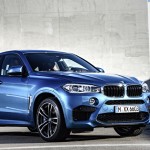Inbox icons, subject line sorcerers, CTA kings – the results are in. The 2025 You Mailed It Awards by Everlytic have crowned their champs, with Old Mutual Rewards and Machine_ taking…
Car dealerships are stuck in the digital desert

Few industries have weathered the storm of change as well as the automotive industry — particularly over the last few years. Not only has the product drastically changed (consumers are spoilt for choice when it comes to picking their dream vehicle) but the entire operating environment is different. Buyers are certainly different. A few years ago, the local car dealership would have been the first stop when someone was ready to make a decision. The salesman would have been a trusted authority and their advice weighed up carefully.
Nowadays, by the time the average buyer walks onto the showroom floor, he or she would already have consulted an average of twenty-four different sources. They are, in short, in a constant state of purchase evaluation.
There is a flood of forums, social media, blogs, articles, reviews, TV shows and magazines available for buyers to pore over…on their phones and PCs. Buyers have never had more information, more spending power, more choice and less time to make a decision than they have today. In the meanwhile, dealerships have fewer resources, lower budgets and more competition than they’ve ever had before. Purchase decisions are largely made long before a buyer comes into contact with a salesperson. The need to get feet through your door is replaced by the very desperate need to get eyes on your site.
However, even against this backdrop, very few dealerships (large and small) have an adequate online presence. Accenture recently conducted research among new car buyers – and stated that their findings “demonstrate a lack of integrated digital marketing among manufacturer and dealer site in the industryâ€.
“Consumers have made it clear that they want better online support, advice and personalisation when buying a car with consistent handoffs to the dealer when they are ready to visit the showroom. At a time when digital marketers are utilising algorithms to predict what online visitors want to know, automakers should be better able to shape web content that is more user-centric,†said Accenture Automotive Industry Group global MD Luca Mentuccia.
The statistics from the survey are certainly telling:
- 74% of respondents desire better integration between dealer sites and inventory search functions;
- 75% required mobile-enabled websites;
- 80% would like more intuitive, customized content
- 76% would like the ability to compare additional options within the same automaker’s product line; and
- 76% have said that the auto sector is significantly lagging behind other retail industries in terms of the use of digital media tools.
The boundaries have shifted. It’s no longer enough to have a physical showroom, a presence at the local auto showcase and an ad in the paper. It’s not even enough to have a website. Clients want to know the exact inventory available, at the exact location, at the exact time. They want to conduct their search and interact with sales staff from the convenience of their office or on their mobile phone.
It’s a demand that is near impossible for the average dealership to meet — their expertise lies in selling and understanding cars, not in technology. Automotive sales platforms have long taken advantage of this need — but whether they’ve met the need is, frankly, debatable.
The platforms that currently available are over-prescriptive and limited, leaving very little control to the actual dealership. In an era where responsiveness and flexibility are the keys to success, this is simply not good enough.
This leaves dealerships in the digital desert. Perhaps they are able to replicate their competitors’ efforts, but they are unable to surpass it. Perhaps they have digital tools available, but they are limited in what they can do with it…moreover, they are locked into lengthy and unnecessary contracts that fail to take the natural fluctuations of the sales season into account.
The only exit is partnering with a platform that enables dealerships to become disruptors in the industry. One that brings all of the tech expertise required, and then hands it to the actual dealership to operate as they choose to.
This scalable, platform-as-a-partner model will without a doubt revolutionise the industry and go a long way towards bridging the digital divide that dealerships are battling with today. Dealerships can focus on their core competency (selling cars) with the tech, geared specifically towards assisting them with that goal, acting as a new lead generation tool.
Dealerships have been battling it out in the digital desert for far too long. It’s time for everyone to flourish.

